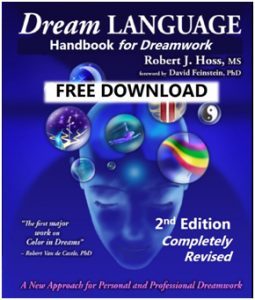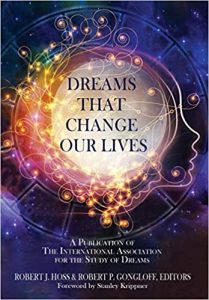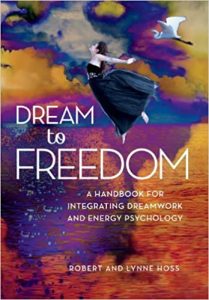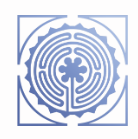International Association for the Study of Dreams http://www.asdreams.org
for information on the following International Association for the Study of Dreams (IASD) upcoming events where you can meet the author Bob Hoss along with many international dream experts. IASD is the Worlds foremost organization supporting dream studies, education and research with annual and regional international conferences, the magazine Dream Time and the professional APA published Journal Dreaming.
The Haden Institute Dream Leadership Training – for therapists, clergy and individuals who wish to lead dream groups or enhance their therapeutic skills. www.hadeninstitute.com
Journals Featuring Dream and EP Research
International Journal of Dream Research: Original articles about dreaming, lucid dreaming and psychological aspects of sleep in general.http://archiv.ub.uni-heidelberg.de/ojs/index.php/IJoDR/index
Dreaming” Journal of the International Association for the Study of Dreams: The journal publishes scholarly articles related to dreams from any discipline and viewpoint. http://www.asdreams.org/dreaming-journal/
Energy Psychology Journal: Theory, Research, and Treatment is a peer-reviewed professional journal dedicated to reporting developments in the field of energy psychology (EP) that are of interest to heathcare professionals and researchers. http://energypsychologyjournal.org/
Dream Links with Research or Scientific Content
- Dreamgate http://www.dreamgate.com/dream/library/idx_science.htm
- Dream and Nightmare Research Laboratory at Montreal’s Sacré-Coeur Hospital http://www.dreams.ca/science.htm
- The Dream Studies Portal – Ryan Hurd http://dreamstudies.org
- The Quantitative Study of Dreams – Schneider & Domhoff http://dreamresearch.net
- Robert Van de Castle http://ourdreamingmind.com
- Wikipedia http://en.wikipedia.org/wiki/Dream
- Stanley Krippner http://en.wikipedia.org/wiki/Stanley_Krippner or http://stanleykrippner.weebly.com/
- Ernest Hartmann Bibliograpy http://www.dreamgate.com/dream/bibs/hrtmnn01.htm
- Alan Hobson –http://en.wikipedia.org/wiki/Allan_Hobson
- The Science Behind Dreams: Why We Dream, Meanings, Interpretations & Facts https://www.25doctors.com/learn/dreams-why-we-dream-meanings-interpretations-and-facts
- Sleep Deprivation & Addiction: How To Guide For Healthy Sleep Patterns
https://www.addictioncampuses.com/addiction-resources/sleep-deprivation/
Other Dream Related Links
- Global Dreaming News http://www.dreamunit.net/news-en/0412.shtml
- The Lucidity Institute http://www.lucidity.com/
- Jacque Lewis, PhD Dreamwork Site –http://lotusdream.org/
- J Harthan – DocDream UK http://www.docdreamuk.com/
- Rosa Anwandter – dreams:articles, sleep dreaming, magazine, history, religions myths, interviews with famous dream researchers –http://www.ceoniric.cl/
Energy Psychology Links
- Innersource – information and programs for developing optimal health, personal growth, spiritual development and well-being though Energy Medicine and Energy Psychology. www.Innersource.net
- EFT Universe –http://www.eftuniverse.com/
- The Association for Comprehensive Energy Psychology – self-help, professional training programs, research summaries and articles, conference on energy psychology. www.energypsych.org
Other Links of Interest
- David Van Nuys radio shows Shrik Rap Radio http://www.shrinkrapradio.com
- Wise Counsel http://wisecounsel.mentalhelp.net
- Drugs and Alcohol Addiction Resources:
https://www.addictiongroup.org/treatment/therapies/mat/
SUGGESTED READING LIST
Books – Dream Research
Content is predominantly research based or theory derived from the scientific study of dreams.
· Barrett D. L. (Ed.) (2001) The Committee of Sleep: How Artists, Scientists, and Athletes Use Dreams for Creative Problem Solving
–and How You Can Too. Kindle Edition (2015)
· Barrett D. L. (Ed.) (2001) Trauma and Dreams, Cambridge, MA: Harvard University Press, 2001 paper
· Barret & McNamara (Eds.), The New Science of Dreaming: Vol. 1-3, Westport Connecticut, Praeger
· Cardeña E., Lynn S.J., and Krippner, S. (Ed) Varieties of anomalous experience: Examining the scientific evidence American Psychological Association, Washington, DC: 2000
· Domhoff , G. William, (1996). Finding Meaning in Dreams: A Quantitative Approach. New York: Plenum.
· Domhoff , G. William, (2003). The Scientific Study of Dreams: Neural Networks, Cognitive Development, and Content Analysis. American Psychological Association Washington,
· Hall C., and Van de Castle R., (1966). The Content Analysis of Dreams, Appleton-Century-Croft, New York,
· Hartmann E., (1973) The Functions of Sleep, Yale University Press
· Hartmann, E. (1984) The Nightmare, Basic Books, NY
· Hartmann, E. (1998) Dreams and Nightmares: The New Theory on the Origin and Meaning of Dreams. New York: Plenum Press.
· Hartmann, E. (2011) The Nature and Functions of Dreaming, Oxford University Press, 2011 (pending)
· Hobson, J. A., (2003) Dreaming: An Introduction to the Science of Sleep. Oxford University Press, USA
· Hoss, R. (2005). Dream Language: Self-Understanding through Imagery and Color. Chapter 3, Ashland: Innersource
· Krippner, S. & Ellis, D.J. (2009) Perchance to Dream: The Frontiers of Dream Psychology; Nova Science Publishers
· Moffitt, A., Kramer, M., Hoffmann, R. (1993) The Functions of dreaming, State Univ of NY Press, Albany
· Pace-Schott E.F., Solms M., Blagrove M., Harnad S. (Eds.), (2003) Sleep and Dreaming. New York, USA, Cambridge University Press.
· Ullman M., Krippner S., Vaughan A., (1973) Dream Telepathy, Macmillan Publishing, NY. NY.
· Van De Castle, R. L. (1994). Our Dreaming Mind. New York, USA: Ballantine Books
Journals
· Dreaming: Journal of the Association for the Study of Dreams, a benefit of membership in the International Association for the Study of Dreams, www.asdreams.org
· International Journal of Dream Research: http://archiv.ub.uni-heidelberg.de/ojs/index.php/IJoDR/index
Resources
· Schneider, A., and Domhoff, G., (1999). DreamBank.net : http://www.dreambank.net
Books – Dream Theory and Dreamwork
The following resources are excellent for personal or professional dreamwork or a general interest in dream theory. Content typically includes psychological findings and approaches, theory and in many cases research based content.
· D. L. Barrett, The Committee of Sleep: How Artists, Scientists, and Athletes Use their Dreams for Creative Problem Solving—and How You Can Too, NY: Crown Books/Random House, 2001
· Kelly Bulkeley and P.Bulkley, Dreaming Beyond Death; Beacon Press (2005)
· Dream Time, a Publication of the International Association for the Study of Dreams and a benefit of membership, www.asdreams.org
· Gayle Delaney, Breakthrough Dreaming, Bantam Books 1991
· M. Emery, The Intuitive Healer, St. Martin’s Press, New York, 1999
· A. Faraday, Dream Power, Berkeley Publishing, 1972
· A. Faraday, The Dream Game, Harper & Row, 1974
· D. Feinstein and S. Krippner, Personal Mythology, Jeremy P. Tarcher, Inc., Los Angeles, CA, 1988
· D. Feinstein and S. Krippner, The Mythic Path, Tarcher/Penguin Putnam, 1997
· P. Garfield, The Healing Power of Dreams, 1991, Simon and Schuster
· P. Garfield, The Dream Messenger: How Dreams of the Departed Bring Healing Gifts; Simon & Schuster, 1997
· P. Garfield, Your Childs Dreams, Balantine, NY 1984
· C. Hall & V. Nordby, A Primer of Jungian Psychology, A Mentor Book, Canada 1973
· C. Hoffman, The Seven Story Tower: A Mythic Journey through Space and Time. Insight Books, Plenum Press, New York and London, 1999.
· R. Hoss, Dream Language: Self-Understanding through Imagery and Color, Innersource, Ashland Oregon, 2005 www.dreamlanguage.org
· C. G. Jung, The Portable Jung, Edited by Joseph Campbell, The Viking Press, N.Y. 1971
· C. G. Jung, Mandala Symbolism, Princeton University Press, 1972
· C. G. Jung, Man and His Symbols, New York, Dell Publishing, 1973
· S. Krippner (1990) Dreamtime & Dreamwork, Jeremy P. Tarcher Inc. Los Angeles, CA.
· S., Krippner, F. Bogzaran, A.Percia De Carvalho, Extraordinary Dreams and How to Work with Them, SUNY Press, New York, (2002)
· S. Krippner, and M. R. Walsman, Dreamscaping, Lowell House, Los Angeles, CA, 1999
· S. LaBerge, Lucid Dreaming, Ballantine Books (1985)
· J. Lasley, Honoring the Dream: A Handbook for Dream Group Leaders, Mount Pleasant: DreamsWork Publications, 2004
· F. S. Perls, Gestalt Therapy Verbatim, Bantam Books, Real People Press, 1974
· Rosner, Lyddon, Freeman (Eds.), Cognitive Therapy and Dreams, Springer Publishing Company, 2003.
· A. Siegel and K. Bulkeley, Dreamcatching, Three Rivers Press, New York (1998)
· A.Siegel, Dream Wisdom, Celestial Arts, Berkeley (2003)
· J. Taylor, Dream Work – Techniques for Discovering the Creative Power in Dreams, Paulist Press, Mahwah New Jersey, 1983
· J. Taylor, Where People Fly & Water Runs Up Hill – Using Dreams to tap the Wisdom of the Unconscious, Warner Books, New York, 1992
· J. Taylor, The Living Labyrinth – Universal Themes in Myths, Dreams, & the Symbolism of Waking Life, Paulist Press, Mahwah New Jersey, 1998
· M. Ullman, and N. Zimmerman, Working With Dreams, Jeremy P. Tarcher, Inc., Los Angeles, CA, 1985
· R. L. Van De Castle, Our Dreaming Mind, Ballantine Books, New York 1994
· Robert Waggoner, Lucid Dreaming: Gateway to the Inner Self , Moment Point Press, Needham, Mass 2009
· Rosa Anwandter (Ed) Los Sueños el Espejo del Alma (Dreams, Mirror of the Soul), Platero, Santiago, Chile, 1998
Selected Dream Research Articles & Studies
· Alain G., (2003) Hôpital Sacré-Cœur of Montreal, University of Montreal, “Replication of the Day-residue and Dream-lag Effect”, presented at the Twentieth International Conference of the Association for the Study of Dreams, Berkeley California 2003
· Bakan P., “Dreaming, REM sleep and the right hemisphere: A theoretical integration,” Journal of Altered States of Consciousness, pp. 285-307
· Barrett D.L., (1992) “Just how lucid are lucid dreams?”, Dreaming: Journal of the Association for the Study of Dreams, Vol 2(4) 221-228, Dec 1992.
· Barrett D.L., (1991) “Flying dreams and lucidity: An empirical study of their relationship”, Dreaming: Journal of the Association for the Study of Dreams, Vol 1(2) 129-134, Jun 1991.
· Melinda Beck, Wall Street Journal Health Journal (JULY 20, 2010) “How to Tame Your Nightmares: Therapies Teach Sleepers to Change the Ending of Their Dreams—or Even Take Flight” http://online.wsj.com/article/SB10001424052748703720504575376994152084232.html
· Blagrove M. T., Burron L., Bradshaw C. (2003), “Dream Recall Frequency is associated with openness to experience but not sleep length,” SLEEP 26
· Dang-Vu et.al., (2007) “Neuroimaging of REM Sleep and Dreaming”, In D. Barret & P. McNamara (Eds.), The New Science of Dreaming: Vol. 1. Bilogical Aspects (pp. 77-82). Westport Connecticut, Praeger
· Feinstein, D. (1990) “The Dream as a Window to Your Evolving Mythology,” in S. Krippner, Dreamtime & Dreamwork, Jeremy P. Tarcher Inc. Los Angeles, CA., pp. 21-33
· Fiss, (1986)., “An experimental self-psychology of dreaming” Journal Of Mind And Behavior 1986, 7, 161-191
· Fosse, Hobson, and Stickgold, (2003), “Dreaming and Episodic memory: a functional dissociation,” Journal of Cognitive Neuroscience, 15: 1-9,
· Fosse, Fosse and Stickgold (2003) “Response to Schwartz: Dreaming and episodic memory.” Trends in Cognitive Sciences vol 7, August 2003.
· Foulkes, (1982) “Dream reports from different stages of sleep,” Journal of … Kamiya (1982) p. 242. 151
· Funkhouser A.T., Hirsbrunner H-P, Cornu C., Barhro M. (1999), “Dreams and dreaming among the elderly: an overview,” Aging & Mental Health 3(1): 10-20.
· Gackenbach, J.; Kuruvilla, B., (2008). The relationship between video game play and threat simulation dreams. Dreaming. Vol 18(4), Dec 2008, 236-256
· Giambra L. M., Jung R.E., Grodsky A. (1996), “Age changes in dream recall in adulthood,” Dreaming 6:17-31.
· Gorman C., (2004) “Why We Sleep,” Time Magazine, 20 December 2004
· Greenberg, R., Pearlman, C. (1975). “Rem Sleep and the Analytic Process”, Psychoanal Q., 44:392-403
· Hartmann E (1996): Outline for a Theory on the Nature and Functions of Dreaming. Dreaming, 6: 147-170.Hartmann E, Rosen R, Rand W, (1998). Personality and Dreaming: Boundary Structure and Dreams, Dreaming, 8: 31-40
· Hartmann, E. (1999). Dreams Contextualize Emotion: A new Way of Understanding Dreams and Dream Symbolism. Psychoanalytic Dialogues. 9: 779-788.
· Hartmann, E. (1999). The nightmare is the most useful dream. Sleep and Hypnosis. 1: 199-203.
· Hartmann, E. (2000). The Waking-to-Dreaming Continuum, and the Effects of Emotion. Behavioral and Brain Sciences. 23: 947-950.
· Hartmann, E., Zborowski, M., Kunzendorf, R. (2001). Emotions pictured by the dream: an examination of emotions contextualized in dreams. Sleep, 24-S, A174-175.
· Hartmann, E. (2001) Dreams and Poetry: the same basic mechanism. Psychotherapy Forum. 8(1): 3-6.
· Hartmann, E., Basile, R. (2003). “Dream Imagery Becomes More Intense After 9/11/01”. Dreaming, 13:61- 66
· Hartmann, E. (2006 ) “Is the CI (Central Image) the Fast Lane on the Royal Road to the Unconscious?” Dream Time
· Hartmann, E, and Brezler, T. (2006) “A Systematic Change in Dreams after 9/11/01”. Sleep 29-S, p A- 48
· Herman, J., Roffwarg, H., & Tauber, E. (1968). Color and other perceptual qualities of REM and NREM sleep. Psychophysiology, 5, 223–229
· Hiscock M. and Cohen D. B., (1973) “Visual imagery and dream recall,” Journal of Research in Personality, 1973, 7, 1; 9-188.
· Hobson, J. A., Pace-Schott, E. F., Stickbold, R. (2003). “Dreaming and the brain: toward a cognitive neuroscience of conscious states”. In E.F. Pace-Schott, M. Solms, M. Blagrove, S. Harnad (Eds.), Sleep and Dreaming. New York, USA, Cambridge University Press.
· Hobson, J. A. (2007) “Current Understanding of Cellular Models of REM expression” in Barret & McNamara (Eds.), The New Science of Dreaming: Vol. 1. Bilogical Aspects (pp. 77-82) Westport Connecticut, Praeger
· Hoss R., (1999) “The Appearance of Color in Dreams”, Dream Time: a Publication of the Association for the Study of Dreams, volume 16, Number 4, 1999
· Hoss (2010) “Evidence of Wisdom in Dreams” Presented at the 27th Annual Conference of the IASD June 2010; Asheville, North Carolina ( www.asdreams.org/2010 abstracts or www.dreamscience.org)
· Hoss, R. (2010). “Content analysis on the potential significance of color in dreams: a preliminary investigation”, International Journal of Dream Research Volume 3, No. 1
· Hoss & Hoss (2010) “The Dream to Freedom Technique”, Energy Psychology Journal, vol 2
· Humphrey M., Zangwill O., (1951) “Cessation of dreaming after brain injury”, Journal of Neurology, Neurosurgery and Psychiatry 14 (1951), pp. 322-325, cited in [1].
· Kahn, E., Dement, W., Fisher, C., Barmack, J. (1962). “Incidence of color in immediately recalled dreams”. Science; 137:1054-1055
· Kahn D., (2004) “Consciousness in Dreaming: Awareness of Feelings”, presentation at the conference, Towards a Science of Consciousness, 2004
· Kellogg, E. “Psychopompic Dreaming: Visits With Those Who Have Passed On?” http://www.asdreams.org/telepathy/2004kellogg_psychopomp.htm
· Murzyn, E., (2008). “Do we only dream in colour? A comparison of reported dream colour in younger and older adults with different experiences of black and white media”. Consciousness and Cognition, Volume 17, Issue 4, December 2008, Pages 1228-1237
· J. Panksepp, (2003) “The dream of reason creates monsters,” Sleep and Dreaming, Cambridge University Press, New York, 2003, p. 200
· Revonsuo & Valli (2000) Testing the Threat Simulation Theory of the Function of Dreaming. Psyche: 6 (8)
· Roffwarg, H., Herman, J., Bowe-Anders, C., Tauber, E. (1978). The Effects of Sustained Alterations of Waking Visual Input on Dream Content. H. In The Mind in Sleep: Psychology and Psychophysiology, Hillsdale, NJ
· Schredl, M. (2008). Laboratory references in dreams: Methodological problem and/or evidence for the continuity hypothesis of dreaming? International Journal of Dream Research : Volume 1, No. 1
· Schredl M. (2003), “Effects of State and Trait Factor on Nightmare Frequency,” SLEEP 26
· Schredl, M., Fuchedzhiea, A., Hämig, H., Schindele, V. (2008). Do we think dreams are in black and white due to memory problems? Dreaming; 18-3: 175-180
· Schwitzgebel, E., (2002) “Why Did We Think We Dreamed in Black and White?” Studies in History and Philosophy of Science, 33: 649-660
· Stewart, D., Koulack, D. (1993) “The function of dreams in adaption to stress over time,” Dreaming, Journal of the Association for the Study of Dreams, December 1993, Volume 3, No. 4, p. 2593, 259-268
· Stickgold R. (2005) “Sleep-dependent memory consolidation”. Nature. 2005 Oct 27;437(7063):1272-8
· Ullman, (1959) “Adaptive Significance of the Dream” Journal of Nervous and Mental Disease: Vol 129, Iss-2






